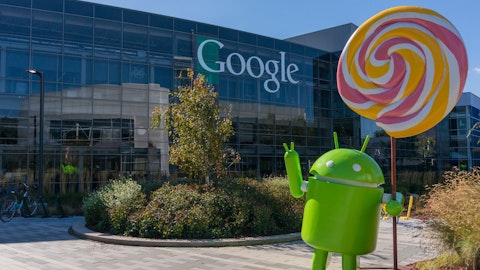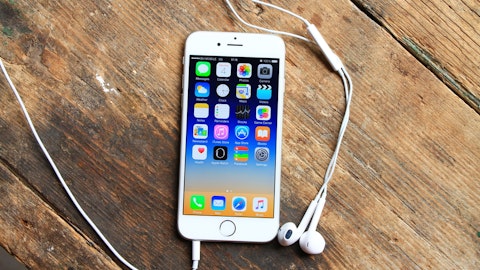Apple Inc. shares currently trade at a trailing price earnings ratio of 14. Currently, analysts believe Apple will earn more than $10 per share next year and achieve a forward PE ration of only 11.6. They argue that Apple seems like a very cheap investment based on this low multiple and its huge net cash position. Can we really trust analysts’ estimates? Are they really skilled at predicting what will happen in 10, 5, or even 2 years into the future?
Analysts keep predicting about companies almost daily. In a huge influx of news and updates, these predictions usually get buried over time. In this article we have decided to throw back to 2014 and see how the predictions made by notable analysts and investors about Apple Inc. (NASDAQ:AAPL), Gilead Sciences, Inc.(NASDAQ:GILD) and Alphabet Inc (NASDAQ:GOOGL) turned out down the road.
Apple Or Russia?
On December 22, 2014, Paul Gambles, managing partner at the financial advisory group MBMG Group, said in an interview to CNBC that he’d prefer buying Russia than owning Apple Inc. (NASDAQ:AAPL)’s shares after the Russian economy crashed amid sanctions put on the country following its aggression in the Eastern Ukraine. Gambles had called investing in the Moscow stock index a “high risk opportunity”, citing valuations of Apple Inc. (NASDAQ:AAPL) and Russia’s equities.
The context of this speculation is interesting. In November that year, Bloomberg’s Srinivasan Sivabalan had published a report which said that if an investor had owned Apple’s stock, they could have sold it and bought the entire Russian stock market, still having enough money to buy an iPhone 6 Plus for the entire Russian population (143.5 million). The Kremlin’s political conflicts, sanctions and economic stagnation had resulted in Russian equities plummeting by $234 billion to $531 billion in 2014, while Apple Inc. (NASDAQ:AAPL)’s value had skyrocketed by $147 billion to $652 billion in the same period.
It seems the investor would have lost a fortune had he invested in Russia in 2014, because the world’s largest country is still suffering from a crippling financial crisis, with no end in sight. Russia has been operating at a deficit since 2012, while its Federal Reserve will go dry 2017. The country still depends upon oil, gas and raw material exports for a major chunk of revenue. As of 2015, oil and gas accounted for a whopping 43% of the government’s revenue.
However, the election of Donald Trump and oil prices finally going above $50 a barrel gave the Russian economy a much needed respite recently. The Moscow Exchange has gained about 12% since the US election, while S&P 500 is up 5.9% in the same period. VanEck Vectors Russia ETF has grown by 33% to $2.5 billion since November 29, while the iShares MSCI Russia ETF assets are up by 16% to $438 million. Russia’s RTS Index was down by over 48% since the start of 2014 till the date of the interview, while the index is down just by 0.70% year-to-date in 2016. An upcoming Pro Russian team in the White House, especially Donald Trump’s selection of Rex Tillerson, who was awarded the Order of Friendship in 2013 by Vladimir Putin, for the position of Secretary of State, signals a welcoming future for Russia, and analysts think that there is a chance that the new US government will ease up sanctions on the country. If the Don lifts sanctions from Russia and oil continues to rally, Gambles’ speculation might prove correct.
Apple Inc. (NASDAQ:AAPL) continues to be the juggernaut in the tech world, but there are signs the company is losing steam, mainly from its primary product, iPhone. In April the company posted its first ever sales and profit drop in a decade. Apple’s manufacturers in China and Taiwan said they received less orders from the company, due to the market saturation and lack of new features to come up to the users’ expectations. Earlier this month, a Taiwan-based manufacturer of Apple told Digitimes that the Apple slashed its orders for iPhone 7. Apple’s stock was trading around $113 a share on December 22, 2014, while its current price is $116.29.
Follow Apple Inc. (NASDAQ:AAPL)
Follow Apple Inc. (NASDAQ:AAPL)
Receive real-time insider trading and news alerts




